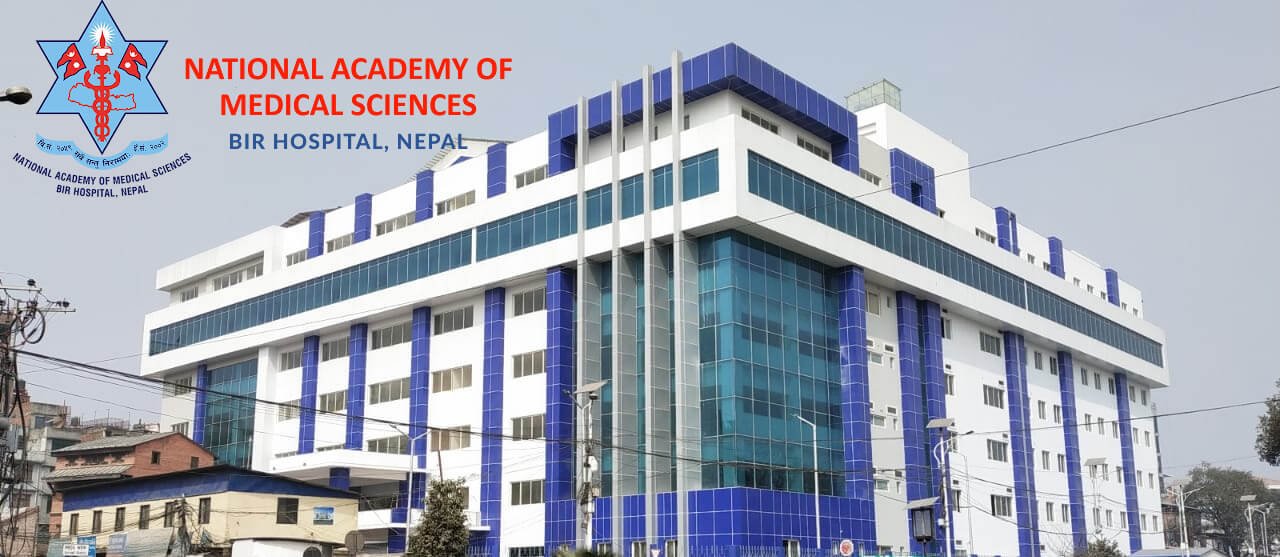Universities
National Academy of Medical Sciences (NAMS)

With the support of Tribhuvan University, post-graduate Education was started in Bir Hospital and other hospitals in the valley through the Post Graduate Medical Education Coordination Committee in 1994 AD. Building upon these experiences and based on the national need, Bir Hospital was developed into the National Academy of Medical Sciences (NAMS) on its glorious 114 years in 2002.
Over the past 12 years, NAMS and its 13 member hospitals have made significant development in their operations. The institution has evolved over this time, producing two levels of nursing education and 33 subjects for postgraduate degrees in MD/MS/MDS/MCh/DM. For postgraduate studies, the yearly admission has grown from 46 to 93 students. The postgraduate programs for the Higher Specialist Training program (DM/MCh) and the Basic Specialist Training program (MD/MS/MDS) are now being offered by the NAMS in many subject areas.
Aims
The National Academy of Medical Sciences (NAMS) has been established by the Government of Nepal to develop initially with the three major aims:
1. To generate skilled labor through postsecondary education in the medical sciences.
2. To provide Nepal with access to high-quality healthcare services and
3. Establishing the academy as the primary national resource for
4. To increase the availability of specialized medical services and research across the nation.
Courses
- DM Cardiology
- DM Diabetes Endocrinology
- DM Nephrology
- DM Gastroenterology
- DM Pulmonary, Critical Care & Sleep Medicine
- DM Hepatology
- DM Neurology
- DM Medical Oncology
- MCH Neurosurgery
- MCH Surgical Gastroenterology
- MCH Plastic Surgery
- MCH TVS
- Master of Nursing
- MD (Doctor of Medicine)
- MS (Master of Surgery)
- MDS (Master of Dental Surgery)
- Bachelor of Medical Science (BMS)
- BSC.MIT
- MSC.MIT
- Bachelor of Optometry and Vision Science (BOVS), NAMS
- Medical Electives
- Fellowship In Urogynecology
- Fellowship In Gynaecological Oncology
- Fellowship In Hand & Microsurgery
- Fellowship In Critical Care Medicine
- Fellowship In Cardio-Thoracic Anaesthesiology
- Fellowship In Neuro-Ophthalmology
- Fellowship In Uveitis
- Fellowship In Cornea and External Eye Disease
- Fellowship In Lens and Cataract
- Fellowship In Orbit, Oculoplastic and Lacrimal (OPAL)
- Fellowship In Paediatric Ophthalmology and Strabismus
- Fellowship In Refractive Surgery
- Fellowship In Vitreo Retinal
- Fellowship In Clinical Glaucoma
- Fellowship In Medical Retina
- Fellowship In Comprehensive Ophthalmology
- ACLS
- Medical Education
- Research Methodology
- Trauma Life Support
- Basic Surgical Skill
- Palliative Course
- Aesthetic Assistant Course
To support, organize, and keep an eye on research activities inside NAMS and its several affiliated institutes across the nation, the organization formed an Institutional Review Board (IRB) for Research. In every subject area of the MD/MS training program, a thesis containing research is required. Publications are necessary for faculty members to be appointed and promoted. The NAMS is fostering a culture of research among medical professionals and institutions across the nation as its programs are implemented in over a hundred hospitals and health centers.